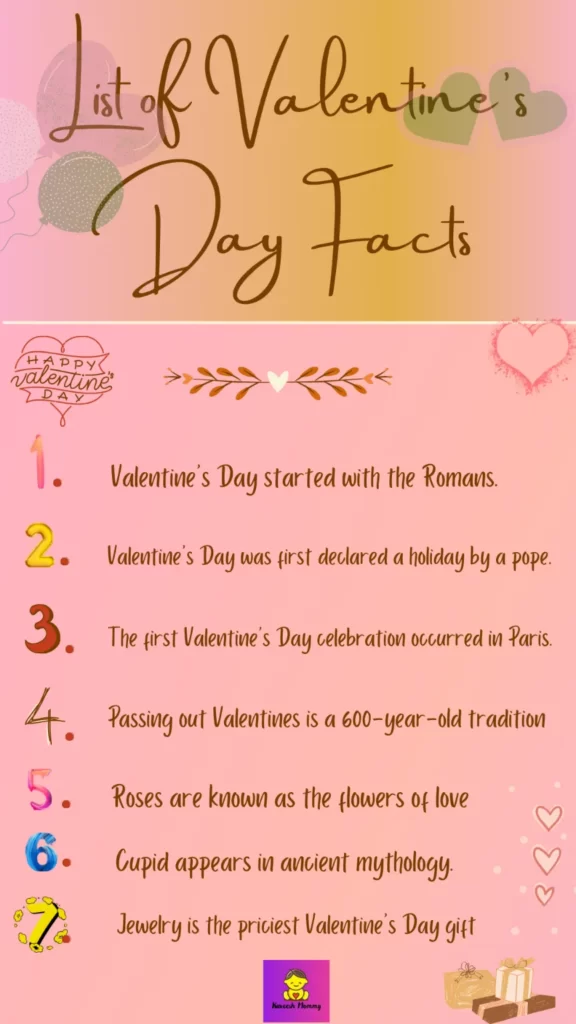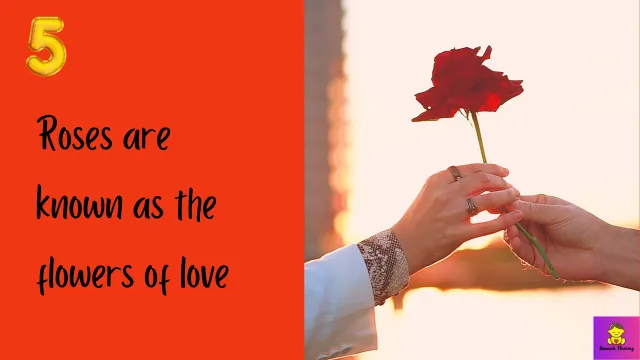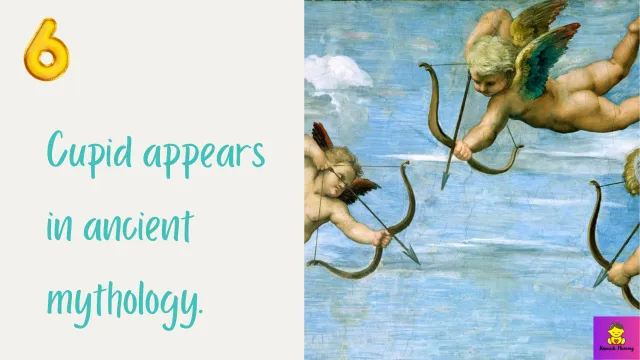If you do not know these, what are some fun facts about Valentine’s Day?
here we have collected 25 Valentine’s Day Facts.
Valentine’s Day isn’t everyone’s cup of tea. But we’ve figured out that the best activities to celebrate the holiday in your own way.
If you are Having trouble figuring out, What to Write in a Valentine’s Day Card
then let us inspire you with these Valentine Day Funny to Romantic messages.
Creating Valentine’s Day cards that say “Happy Valentine to love one” or other Valentine’s Day messages for boyfriend, girlfriend, fiancé, husband, wife, friend, and family is a wonderful way to express your love.
if you’re wondering, “What is the best message for Valentine’s Day in advance?” you don’t need to panic!
Also read valentine day activities:
- 25 Amazing Valentine’s Day Facts: That You Did not Know
- 20 Best Valentine Day Movies to Watch
- 60 Best Happy Valentine Day In Advance Messages
- 80 Best Valentine Day Quotes for Everyone
Also read valentine day gifts ideas:
What is Valentine’s Day?
Valentine’s Day is a holiday when lovers express their affection with greetings and gifts. It is also called St. Valentine’s Day.
The holiday has expanded to express affection between relatives and friends.
When is Valentine’s Day?
Valentine’s Day is celebrated annually on February 14.
Who is Valentine’s Day named for?
Although there were several Christian martyrs named Valentine, Valentine’s Day may have taken its name from a priest who was martyred about 270 CE by the Roman emperor Claudius II Gothicus.
Other accounts hold that it was St. Valentine of Terni, a bishop, for whom the holiday was named, though it is possible that the two saints were actually one person.
Where is Valentine’s Day celebrated?
Valentine’s Day is popular in the United States as well as in Britain, Canada, and Australia, and it is also celebrated in other countries,
including Argentina, France, Mexico, and South Korea. In the Philippines, it is the most common wedding anniversary.
How is Valentine’s Day celebrated?
Valentine’s Day is commonly celebrated by exchanging handmade or store-bought “Valentines” (greeting cards) or other tokens of affection like chocolates and flowers.
In many schools, it has become customary for young students to bring in Valentines to swap with classmates. Traditions of the holiday’s observance can vary with the country. Learn more.

List of Valentine’s Day Facts
Here are 20 Valentine’s Day facts
Valentine’s Day started with the Romans.

There are two theories about the origin of Valentine’s Day. Some believe the day derives from Lupercalia, a raucous Roman festival on February 15th where men stripped naked and spanked young maidens in the hopes of increasing their fertility.
The second theory is that while the Roman Emperor Claudius II was trying to bolster his army, he forbade young men to marry.
In the spirit of love, St. Valentine defied the ban and performed secret marriages, and for his disobedience, Valentine was executed on February 14 around the year 270 A.D.
Valentine’s Day was first declared a holiday by a pope.

In 496 A.D., Pope Gelasius I made the feast of St. Valentine an official holiday, apparently hoping to expel the pagan rituals of Lupercalia by combining it with St. Valentine’s Day.
They later removed the holiday from the Roman Calendar of Saints.
After the Second Vatican Council in 1969, Pope Paul VI decided to remove St. Valentine’s Day from the calendar of major holidays, mostly because very little about the actual St. Valentine could be verified.
However, its religious observance is still allowed. Anglicans and Lutherans recognize February 14 as an official feast day, while the Eastern Orthodox Church celebrates St. Valentine on July 6.
The first Valentine’s Day celebration occurred in Paris.

The first known official celebration of Saint Valentine’s Day took place in Paris on February 14, 1400, which is when King Charles VI of France established La cour amoureuse, or the High Court of Love.
The court, entirely run by women, met to deal with marriage contracts, divorces, infidelity, and domestic violence.
Passing out Valentines is a 600-year-old tradition.

The oldest record of a Valentine is a poem Charles, the Duke of Orleans, wrote to his wife when he was imprisoned in the Tower of London in 1415, in which he refers to his wife as his “Valentine.” For lack of a better phrase, the rest is history.
9. Roses are known as the flowers of love.

It’s hard to imagine a more enduring symbol of romance than red roses. But, how did these beautiful blossoms earn their reputation as an emblem of love and passion? Red roses have been regarded in this way for centuries.
In ancient mythology, roses are said to have been the favorite flower of the goddess of love, Aphrodite. Christian cultures correlate red roses with the Virgin Mary, which is why you’ll often see depictions of her surrounded by a floral shroud.
And in Shakespeare’s classic sonnets, roses are referenced more than 70 times. It’s no wonder red roses are the quickest to sell out on Valentine’s Day.
Cupid appears in ancient mythology.

Cupid, with his famous bow and arrows, is a well-known symbol of Valentine’s Day. What most people don’t know is that Cupid was a prominent figure in both Greek and Roman mythology.
Before he became the childlike character we recognize today, he was known to the Ancient Greeks as Eros, the god of love.
The son of Greek goddess, Aphrodite, Cupid would toy with his target’s emotions by striking them with two sets of arrows—one for love, and the other for hate.
The Romans would later recount the tales of Cupid’s mischief in their own mythology. They believed Cupid was the son of Venus, the goddess of love and beauty. It was the Romans who reimagined Cupid as chubby and playful.
In fact, in classical Greek art, Eros is portrayed as an irresistible immortal that was chiseled and handsome.
Jewelry is the priciest Valentine’s Day gift.

While candy and flowers may seem like the hottest sellers, it’s actually jewelry that people spend the most on for Valentine’s Day.
The jewelry industry rakes in an astonishing $4.7 billion for this romantic holiday. This is followed by an evening out at $3.7 billion, with flowers, clothing, and then candy trailing behind.
they purchase millions of greeting cards every year.
We’re talking 145 million greeting cards being exchanged industry-wide every year for Valentine’s Day in the U.S. alone, according to Hallmark, making it the second largest holidays for greeting cards after Christmas.
10. Valentine’s Day is expensive.
At least if you go by statistics released by the National Retail Federation, which found that Americans spent more than $20 billion on the holiday in 2019, and were predicted to exceed that figure by $7.4 billion in 2020.
Men were expected to spend $291 each, a significant chunk more than women, who were expected to spend $106.
7. Esther Howland is the first manufacturer of Valentines.
Before Esther Howland commercialized Valentine’s Day cards and became known as the “Mother of the American Valentine,” Valentines in America were less romantic and more comical.
Her inspiration came from the thoughtful and sweet greeting cards that were circulating in England, and she decided to sell similar designs in the U.S. starting in the 1870s. Needless to say, they took off.
People spend a lot on their pets for Valentine’s Day.
It’s no secret that people love their pets. Most pet parents consider their furry friends full-fledged members of the family. So, it only makes sense they’d want to include their pet in holiday festivities.
Millions of Americans spend outrageous amounts on their pets for Valentine’s Day, and are estimated to have forked out $886 million in 2019 alone.
Whether it’s a new outfit or a special sweet treat, people are thrilled to spoil their cuddly companions. After all, is there a love more true and pure than that of a precious pet? We think not!
Funny Valentine’s Day Facts
What are some fun facts about Valentines Day?
Here are 10 fun facts about Valentines Day
An infamous king made Valentine’s Day an official holiday.
In 1537, England’s King Henry VIII officially declared February 14 the holiday of St. Valentine’s Day by royal charter. And yes, he is the monarch who had six wives: one who died, one who survived, two who he divorced, and two who he beheaded.
Cupid Actually Started Out As A Greek God
The common symbol for love – Cupid with his cherubic looks and angel wings – was originally the Greek god, Eros. Eros was the son of Aphrodite, the goddess of love and procreation.
Cupid is known to shoot two types of arrows – one to make people fall in love and one to make them hate each other.
Men and women prefer candy to flowers.
Both men and women prefer to receive chocolate over flowers, according to the National Confectioners Association.
The survey also found that chocolate sales represent 75 percent or more of Valentine’s Day candy purchases.
‘X’ Was Originally Not A Symbol For Kiss
Though we sign off our letters and texts X’s these days as symbols of kisses, this was not this letter’s original purpose.
In medieval times, when people did not know how to sign their names, they would simply sign off with an X.
To show their loyalty and affection, they would then kiss the X before sending the letter.
Valentine’s Day is a popular holiday to get engaged.
This seems fitting: A 2017 study by diamond retailer James Allen found that 43 percent of millennials chose Valentine’s Day as their ideal day to propose or to accept a proposal.
Candy Hearts Started Out As Medical Lozenges
The popular Valentine’s Day candy, candy hearts, started out as medical lozenges for the throat! Boston-based pharmacist Oliver Chase invented the machine that produced small medical lozenges.
When he saw the popularity of these small pop-in medicines, he turned them into candy with cute messages on them.
Different Places Celebrate Valentine’s Day In Different Ways
Valentine’s Day is celebrated in many different ways around the world. In Japan, women give chocolates to men.
Men reciprocate this gesture a month later on March 14th, i.e., White Day. In Finland, February 14th is celebrated as Ystävänpäivä, which translates to Friends Day.


